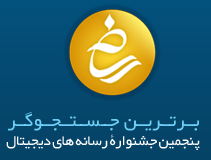عنوان
پدید آورنده
موضوع
رده
QA76.9.S88 S26 2009eb
QA76
.
9
.
S88
S26
2009eb
کتابخانه
محل استقرار
شابک
شابک
0080569781
شابک
0750687061
شابک
1282285130
شابک
6612285133
شابک
9780080569789
شابک
9780750687065
شابک
9781282285132
شابک
9786612285134
شماره کتابشناسی ملی
شماره
b762611
عنوان و نام پديدآور
عنوان اصلي
Practical UML statecharts in C/C++ :
نام عام مواد
[Book]
ساير اطلاعات عنواني
event-driven programming for embedded systems /
نام نخستين پديدآور
Miro Samek.
وضعیت ویراست
وضعيت ويراست
2nd ed.
وضعیت نشر و پخش و غیره
محل نشرو پخش و غیره
Boston :
نام ناشر، پخش کننده و غيره
Newnes/Elsevier,
تاریخ نشرو بخش و غیره
©2009.
مشخصات ظاهری
نام خاص و کميت اثر
1 online resource (xxxi, 712 pages) :
ساير جزييات
illustrations
یادداشتهای مربوط به کتابنامه ، واژه نامه و نمایه های داخل اثر
متن يادداشت
Includes bibliographical references (pages 693-697) and index.
یادداشتهای مربوط به مندرجات
متن يادداشت
Preface -- PART I STATECHARTS -- Chapter 1 Whirlwind Tour of Programming with Statecharts -- 1.1 Why Bother? -- 1.2 The Traditional Event-Action Paradigm -- 1.3 State Machines? A Better Way of Programming -- 1.3.1 The Time Bomb Example -- 1.3.2 The Calculator Example -- 1.5 Object-Oriented Analogy -- 1.6 The Event-driven Framework -- 1.6 Summary -- Chapter 2 A Crash Course in Statecharts -- 2.1 The Essence of Finite State Machines -- 2.2 The Essence of UML Statecharts -- 2.3 Examples of State Models -- 2.4 Summary -- Chapter 3 Standard State Machine Implementations -- 3.1 State Machine Interface -- 3.2 Nested switch Statement -- 3.3 State Table -- 3.4 State Design Pattern -- 3.5 Optimal FSM Implementation -- 3.6 State Machines and C++ Exception Handling -- 3.7 Role of Pointer-to-Member Functions -- 3.8 Implementing Guards, Junctions, and Choice Points -- 3.9 Implementing Entry and Exit Actions -- 3.10 Dealing with State Hierarchy -- 3.11 Summary -- Chapter 4 QEP: A Minimal Hierarchical Event Processor -- 4.1 General Structure of the QEP Event Processor -- 4.2 An Annotated Example (QHsm) -- 4.3 QEP Structure -- 4.3.1 QEP Source Code Structure -- 4.3.2 Internal Representation of a State Machine -- 4.3.3 Initialization of a State Machine -- 4.3.4 Dispatching Events to a FSM -- 4.3.5 Executing a Transition in a FSM -- 4.3.6 Dispatching Events to a HSM -- 4.3.7 Executing a Transition in a HSM -- 4.3.8 Static Transition Optimization in a HSM -- 4.4 Porting and Configuring QEP -- 4.5 Caveats -- 4.6 Summary -- Chapter 5 Implementing State Machines with QEP -- 5.1 Implementing a HSM with QEP -- 5.1.1 Step 1: Enumerating Signals -- 5.1.2 Step 2: Defining Events -- 5.1.3 Step 3: Defining the QCalc State Machine -- 5.1.4 Step 4: Declaring the QCalc States -- 5.1.5 Step 5: Initializing the HSM -- 5.1.6 Step 6: Implementing the State Handler Functions -- 5.2 Implementing a FSM with QEP -- 2.5 Pitfalls to Avoid While Coding State Machines with QEP -- 2.5.1 Incomplete State Handlers2-37 -- 2.5.2 Confusing Statecharts with Flowcharts2-38 -- 2.5.3 Ill-Formed State Handlers2-39 -- 2.5.4 Suboptimal Signal Granularity2-42 -- 2.5.5 Violating the Run To Completion Semantics2-42 -- 4.6 Summary -- Chapter 6 State Patterns -- 6.1 Ultimate Hook -- 6.2 Reminder -- 6.3 Deferred Event -- 6.4 Orthogonal Component -- 6.5 Transition to History -- 6.6 Summary -- PART II EVENT-DRIVEN FRAMEWORK -- Chapter 7 QF: A Minimal Event-Driven Embedded Framework -- 7.1 Conventional Approach to Multithreading -- 7.2 Computing Model of QF -- 7.3 Annotated Example -- 7.3.1 The?Airplane in the Tunnel? Game -- 7.3.2 The Active Object Design -- 7.3.3 The Implementation -- 7.3.4 The Port for ARM Cortex-M3 -- 7.3.5 Testing -- 7.4 Summary -- Chapter 8 Design of QF -- 8.1 Handling Errors and Exceptional Conditions -- 8.2 Memory Management -- 8.3 Mutual Exclusion and Blocking -- 8.4 Active Objects -- 8.5 Event Management in QF -- 8.6 Event Delivery Mechanisms in QF -- 8.9 Deferring and Recalling Events in QF -- 8.7 Time Events -- 8.8 Summary -- Chapter 9 Implementation of QF -- 9.1 Code Organization -- 9.2 Critical Section in QF -- 9.3 General QF Policies Enforced by Assertions -- 9.4 Active Object class -- 9.5 Native QF Event Queue -- 9.6 Native QF Memory Pool -- 9.7 Native QF Priority Set -- 9.8 Native QF Scheduler -- Chapter 10 Porting QF -- 10.1 QF Porting Guide -- 10.2 QF on Bare-Metal Targets (the Vanilla Port) -- 10.3 Using QF with a preemptive Real-Time Kernel (æC/OS-II) -- 10.4 QF port to a POSIX-Compliant OS (Linux) -- 10.5 Summary -- Chapter 11 Conclusion -- 11.2 Rules for Developing Event-Driven Embedded Applications -- 11.3 Heuristics -- 11.4 Sizing Event Queues and Event Pools -- 11.5 System Integration -- 11.6 Summary of Key Elements -- 11.7 An Invitation -- Appendix A QK: A Single-Stack Preemptive Kernel -- A.2 Run-to-Completion Processing -- A.3 Synchronous and Asynchronous Preemptions -- A.4 Stack Utilization -- A.4 Comparison with a Traditional RTOS -- A.5 Summary -- Appendix B QS: Software Tracing for Event Driven Systems -- B.1 Software Tracing Concepts -- B.2 Structure of QS Trace Records -- B.3 QS Filters -- B.4 QS Data Protocol -- B.5 QS Trace Buffer -- B.6 Configuring and Porting QS -- B.7 Summary -- Appendix C Inheriting Entire State Models in C++ -- C.1 Statechart Refinement Example in C++ -- C.3 Caveats -- C.4 Summary -- Appendix D Guide to Notation -- D.1 Class Diagrams -- D.2 Statechart Diagrams -- D.3 Sequence Diagrams -- D.4 Timing Diagrams -- Appendix E CD-ROM -- E.1 Source Code Structure -- E.2 Installation -- E.3 Licensing -- E.4 Answers to the Exercises -- E.5 QP Reference Guide (Doxygen) -- E.6 Resources -- Bibliography -- Index.
بدون عنوان
0
یادداشتهای مربوط به خلاصه یا چکیده
متن يادداشت
Practical UML Statecharts in C/C++ Second Edition bridges the gap between high-level abstract concepts of the Unified Modeling Language (UML) and the actual programming aspects of modern hierarchical state machines (UML statecharts). The book describes a lightweight, open source, event-driven infrastructure, called QP that enables direct manual coding UML statecharts and concurrent event-driven applications in C or C++ without big tools. This book is presented in two parts. In Part I, you get a practical description of the relevant state machine concepts starting from traditional finite state automata to modern UML state machines followed by state machine coding techniques and state-machine design patterns, all illustrated with executable examples. In Part II, you find a detailed design study of a generic real-time framework indispensable for combining concurrent, event-driven state machines into robust applications. Part II begins with a clear explanation of the key event-driven programming concepts such as inversion of control ("Hollywood Principle"), blocking versus non-blocking code, run-to-completion (RTC) execution semantics, the importance of event queues, dealing with time, and the role of state machines to maintain the context from one event to the next. This background is designed to help software developers in making the transition from the traditional sequential to the modern event-driven programming, which can be one of the trickiest paradigm shifts. The lightweight QP event-driven infrastructure goes several steps beyond the traditional real-time operating system (RTOS). In the simplest configuration, QP runs on bare-metal microprocessor, microcontroller, or DSP completely replacing the RTOS. QP can also work with almost any OS/RTOS to take advantage of the existing device drivers, communication stacks, and other middleware. The accompanying website to this book contains complete open source code for QP, ports to popular processors and operating systems, including 80x86, ARM Cortex-M3, MSP430, and Linux, as well as all examples described in the book. *Focuses on core concepts rather than tools which are always changing allowing the reader to continue to use this information with various projects *Provides a complete, ready-to-use, open source software architecture for small and large embedded systems *Includes an extensive example using the ARM Cortex-M3 throughout the book highlighting issues programmers and architects encounter in everyday life.
یادداشتهای مربوط به سفارشات
منبع سفارش / آدرس اشتراک
Elsevier Science & Technology
شماره انبار
152626:152780
ویراست دیگر از اثر در قالب دیگر رسانه
عنوان
Practical UML statecharts in C/C.
شماره استاندارد بين المللي کتاب و موسيقي
0750687061
موضوع (اسم عام یاعبارت اسمی عام)
موضوع مستند نشده
Computer software-- Development.
موضوع مستند نشده
Formal methods (Computer science)
موضوع مستند نشده
Object-oriented programming (Computer science)
موضوع مستند نشده
Statecharts (Computer science)
موضوع مستند نشده
System design.
موضوع مستند نشده
UML (Computer science)
موضوع مستند نشده
Computer software-- Development.
موضوع مستند نشده
Computer software-- Development.
موضوع مستند نشده
COMPUTERS-- Programming-- Object Oriented.
موضوع مستند نشده
Formal methods (Computer science)
موضوع مستند نشده
Formal methods (Computer science)
موضوع مستند نشده
Object-oriented programming (Computer science)
موضوع مستند نشده
Object-oriented programming (Computer science)
موضوع مستند نشده
Statecharts (Computer science)
موضوع مستند نشده
Statecharts (Computer science)
موضوع مستند نشده
System design.
موضوع مستند نشده
System design.
موضوع مستند نشده
UML (Computer science)
موضوع مستند نشده
UML (Computer science)
مقوله موضوعی
موضوع مستند نشده
COM-- 051210
رده بندی ديویی
شماره
005
.
117
ويراست
22
رده بندی کنگره
شماره رده
QA76
.
9
.
S88
نشانه اثر
S26
2009eb
نام شخص به منزله سر شناسه - (مسئولیت معنوی درجه اول )
مستند نام اشخاص تاييد نشده
Samek, Miro.
مبدا اصلی
تاريخ عمليات
20201204220708.0
قواعد فهرست نويسي ( بخش توصيفي )
pn
دسترسی و محل الکترونیکی
نام الکترونيکي
 مطالعه متن کتاب
مطالعه متن کتاب اطلاعات رکورد کتابشناسی
نوع ماده
[Book]
اطلاعات دسترسی رکورد
تكميل شده
Y

